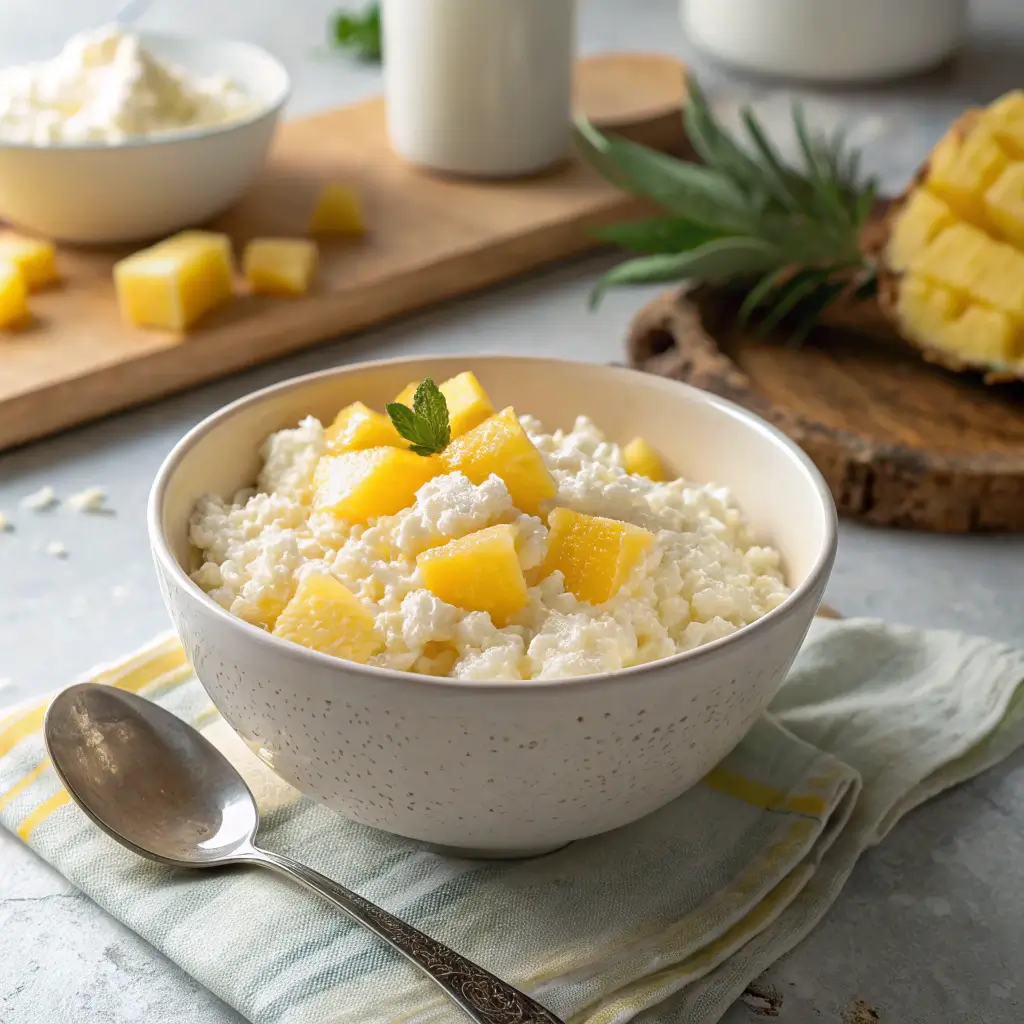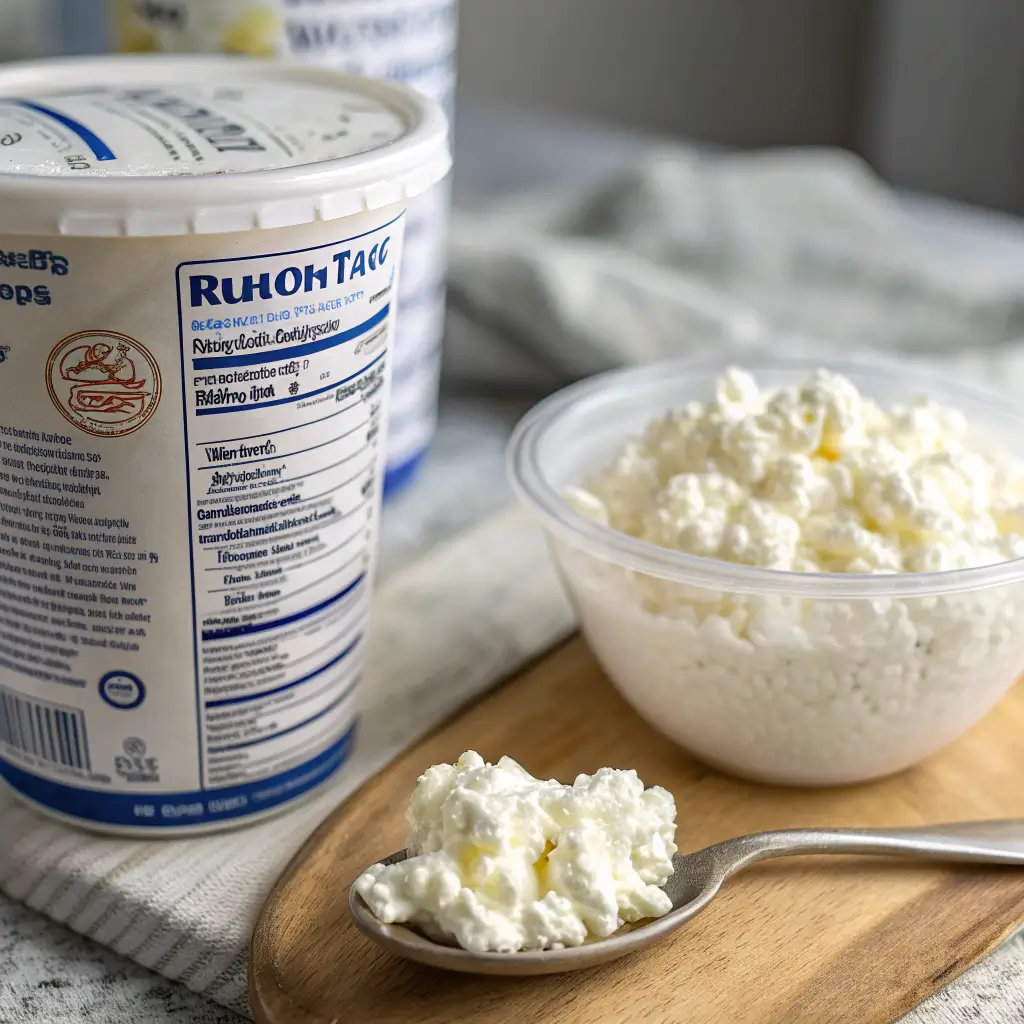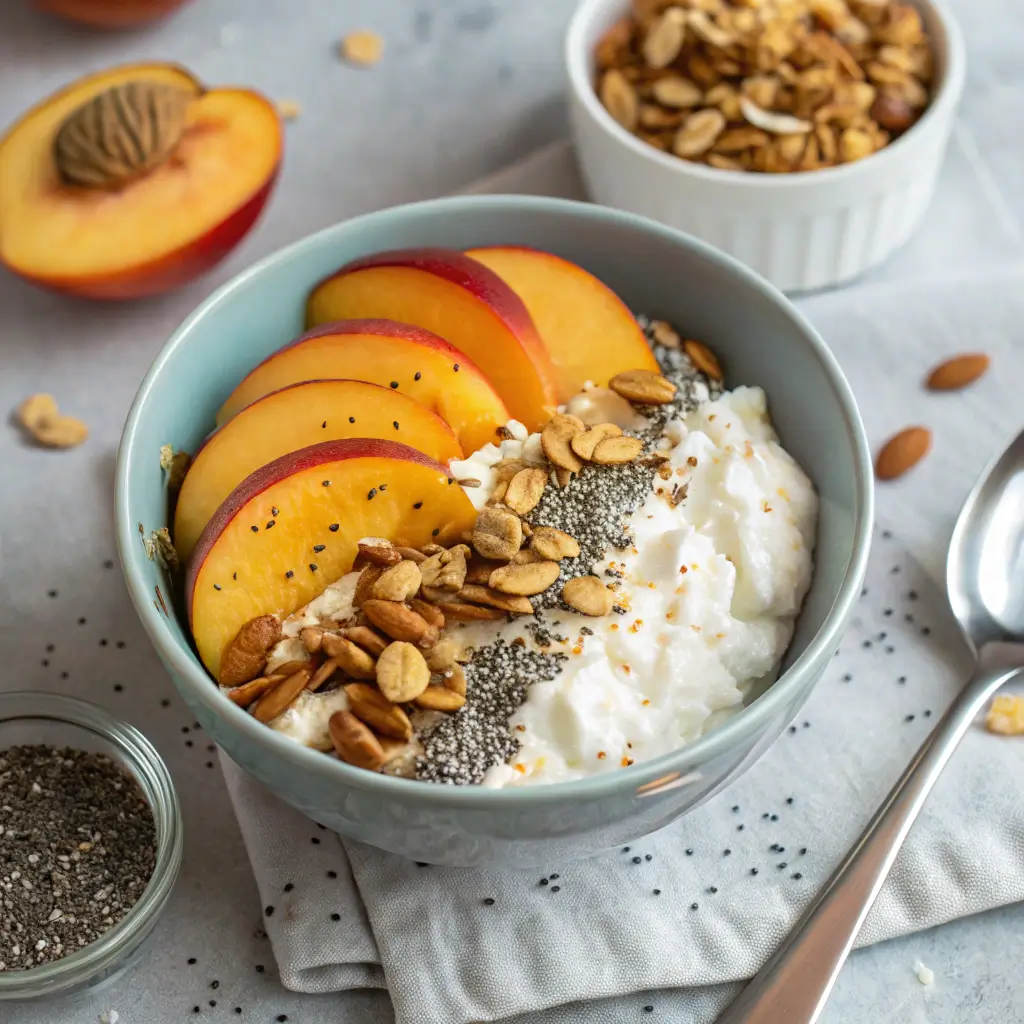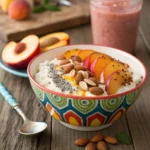
Cottage cheese has long been a staple in the world of healthy eating, but few brands are as recognizable and trusted as Hood Cottage Cheese. Whether you’re a fitness enthusiast looking for a high-protein snack or someone craving a creamy texture with a touch of fruit, Hood offers a versatile product line that’s hard to ignore. This guide dives deep into everything you need to know about Hood Cottage Cheese—from its nutrition facts and flavors to where to buy it and how it stacks up against competitors like Daisy low-fat cottage cheese.
What Is Hood Cottage Cheese?
The History and Evolution of the Brand
Rooted in New England since the 1800s, Hood has built a legacy around high-quality dairy products, including milk, creams, and cheeses. As demand for low-fat, high-protein foods grew, Hood introduced its cottage cheese line to meet the needs of modern consumers.
Over time, this product evolved into a household staple, praised for its clean taste, satisfying texture, and variety of choices. From classic plain to convenient single-serve cups, Hood has continuously adapted to changing lifestyles and dietary preferences.
Despite occasional rumors about discontinuation, Hood cottage cheese remains widely available across the U.S., though availability may vary by region.
What Sets Hood Apart from Competitors?
So why do so many people choose Hood over other brands? It all comes down to three factors: texture, taste, and transparency .
Consumers appreciate the unique balance of smooth and chunky curds, offering both creaminess and substance. Hood also offers distinctive flavors like pineapple and peach, giving it an edge over competitors with more limited flavor selections.
Here’s how Hood compares:
| Feature | Hood | Typical Competitor |
|---|---|---|
| Protein per serving | 13g–15g | 10g–12g |
| Fruit flavors | Yes (Peach, Pineapple) | Limited |
| Texture | Creamy with defined curds | Often grainy |
| Fat options | Low-fat & regular | Mostly regular |
| Availability | Major grocery stores & online | Regional chains only |
In addition to great taste and texture, Hood emphasizes nutritional clarity. Each cup clearly lists calories, fat, protein, and sodium, making it easy for consumers to make informed choices—whether counting macros or simply eating healthier.
For more details on how Hood stacks up nutritionally, check out our full breakdown of cottage cheese nutrition facts .
Packaging That Stands Out
Ever noticed how easy it is to spot Hood in the dairy aisle? That’s no accident. The brand designs its packaging to appeal to those who care not just about what’s inside, but how it looks on the shelf—bold, clean, and unmistakably Hood.
Hood Cottage Cheese Nutrition Facts and Health Benefits

Hood Cottage Cheese Nutrition Facts: Calories, Protein, Fat, Carbs
Let’s break down the Hood Cottage Cheese nutrition facts, which are key for health-conscious shoppers. Hood provides an excellent balance of macronutrients, particularly ideal for high-protein, low-carb diets.
Here’s a general snapshot of the nutrition per ½ cup serving (113g) of low-fat Hood Cottage Cheese:
| Nutrient | Amount |
|---|---|
| Calories | 90–110 |
| Total Fat | 1g–2.5g |
| Saturated Fat | 0.5g |
| Protein | 13g–15g |
| Carbohydrates | 3g–5g |
| Sodium | 360mg–400mg |
| Sugar | 3g–4g |
Hood products typically use simple, minimal ingredients—just another reason they’re a go-to for clean eating. The Hood cottage cheese ingredients include cultured pasteurized milk and cream, salt, stabilizers like guar gum, and enzymes.
For those comparing with other brands, Daisy low fat cottage cheese nutrition is similar, but some find Hood creamier and slightly more filling.
Is Hood Cottage Cheese Good for You?
In a word: Yes. Hood Cottage Cheese is an excellent source of:
- Lean protein, helping with muscle repair and satiety
- Calcium, for strong bones and teeth
- Probiotics, which support gut health (in some versions)
It’s also low in carbs, making it suitable for keto or low-carb diets. Just watch out for sodium content if you’re on a low-salt regimen.
Flavors and Ingredients Breakdown
Exploring the Full Range of Hood Cottage Cheese Flavors
Whether you like it classic or fruity, Hood Cottage Cheese flavors cater to a wide range of tastes. Here’s a list of their most popular varieties:
- Plain Low-Fat (1% and 2%)
- Full-Fat Traditional
- With Pineapple
- With Peaches
- Strawberry Blend
- Chive & Herb (savory option)
Each flavor adds versatility to your diet—perfect in both sweet and savory dishes. Their fruit-flavored varieties have added sugars, but they still clock in at around 120–130 calories per serving, keeping them light yet tasty.
Want to try it in a creative way? Don’t miss our easy cottage cheese egg breakfast idea.
Hood Cottage Cheese Ingredients: What’s Inside?
The ingredients remain clean and straightforward. Here’s a typical label for their low-fat variety:
- Cultured Pasteurized Skim Milk
- Cream
- Salt
- Guar Gum
- Carrageenan
- Locust Bean Gum
- Enzymes
Unlike many processed cheeses, there are no artificial colors or sweeteners. Their fruit versions include real fruit blends and cane sugar, keeping them naturally sweet.
Where to Buy Hood Cottage Cheese and Pricing Guide
Hood Cottage Cheese Where to Buy: Online and In-Store Options
You might be wondering: Where can I buy Hood Cottage Cheese? Despite some rumors of a product pullback, Hood is still widely distributed across the U.S., especially in the Northeast.
Here are your top options:
- Grocery Stores: Walmart, Stop & Shop, Shaw’s, Kroger, Hannaford
- Online Retailers: Instacart, Amazon Fresh, FreshDirect
- Regional Markets: Wegmans, Market Basket, and Publix (limited)
If your local store doesn’t carry it, ask customer service to place a special order or check out the homemade cottage cheese guide for a DIY alternative.
Price Comparison with Other Brands Like Daisy
Let’s compare Hood to a few competitors in the same category:
| Brand | Price (16 oz) | Protein | Flavors Available |
|---|---|---|---|
| Hood | $2.99–$3.69 | 13g+ | 6+ |
| Daisy | $2.79–$3.49 | 13g | Plain only |
| Good Culture | $3.99–$4.99 | 14g | 5+ (Organic) |
Hood offers a solid price-to-value ratio, especially for those looking for flavored cottage cheese options.
Hood Cottage Cheese Discontinued? Exploring the Buzz
Has Hood Cottage Cheese Been Discontinued? Facts vs Rumors
There’s been chatter online around Hood Cottage Cheese discontinued headlines, causing concern among loyal fans. However, there’s no official statement from the company indicating a complete discontinuation. What’s more likely is a regional supply chain shift—with certain flavors or sizes being paused in select stores.
If your favorite flavor is missing, don’t panic—it’s often a distribution issue, not a product termination.
How to check availability?
- Visit the Hood product locator on their official site
- Call your local grocery store
- Use shopping apps like Instacart to browse regional stock
Consumer Reaction and Alternatives to Hood Cottage Cheese
Some consumers have shared frustration over limited stock or disappearing fruit varieties. However, Hood has not pulled its cottage cheese line from shelves entirely. In fact, sales of high-protein dairy snacks are on the rise—driven by fitness and wellness trends.
Still can’t find it? Check out these top cottage cheese brands as alternatives. Good Culture and Daisy both offer decent substitutes, but Hood’s creamy texture and fruit blends are still top-rated in taste tests.
Comparing Hood Cottage Cheese with Other Brands
Hood vs Daisy Low Fat Cottage Cheese Nutrition
When it comes to nutritional comparisons, Hood and Daisy are two big players. Here’s how they stack up head-to-head:
| Feature | Hood Cottage Cheese | Daisy Low Fat Cottage Cheese |
|---|---|---|
| Protein per serving | 13g–15g | 13g |
| Calories (½ cup) | 90–110 | 90 |
| Fat content | 1g–2.5g | 2g |
| Carbs | 3g–5g | 4g |
| Fruit flavors | Yes | No |
| Thickening agents | Yes | No (Daisy = cleaner label) |
While Daisy wins on minimal ingredients, Hood scores with flavor variety and more options for picky eaters. For families or athletes, the extra flavor choices and satisfying texture make Hood a winner.
Taste, Texture, and Ingredient Differences
Taste-wise, Hood is creamy, tangy, and rich with visible curds. Daisy has a milder flavor and smoother consistency. Hood’s versions with fruit or herbs introduce a layer of complexity not found in most plain cottage cheeses.
Looking for other options with flavor? Try cottage cheese bagel recipes or use Hood as a pizza crust base.
Delicious Ways to Eat Hood Cottage Cheese

Recipes Using Hood Cottage Cheese with Fruit
Hood’s fruit varieties are perfect for snack bowls, smoothies, or just grabbing a spoon. Here’s a quick no-cook recipe to try:
Peach Power Bowl
- ½ cup Hood Cottage Cheese with Peaches
- 1 tbsp chia seeds
- Handful of sliced almonds
- Drizzle of honey
This combo is packed with protein, fiber, and healthy fats — ideal for a post-gym snack or quick breakfast.
High-Protein Snacks & Breakfast Ideas with Hood Cottage Cheese
Other tasty ideas:
- Spread on toast with avocado and chili flakes
- Blend into a smoothie for creaminess and added protein
- Top with granola and banana slices
- Mix with hard-boiled eggs for a quick keto snack
- Use as a pasta or dip base (try cottage cheese dips)
You can even whip it for a high-protein pudding—see our recipe for cottage cheese pudding for inspiration.
FAQs :
Is Hood cottage cheese good for you?
Yes, it’s rich in protein, low in fat (depending on the variety), and contains calcium. It’s an ideal choice for high-protein diets and active lifestyles.
What is the best cottage cheese to eat?
That depends on your goals. Hood is great for flavor options. Daisy is ideal if you prefer a cleaner ingredient list. Look for brands with high protein, low sugar, and minimal additives.
Is cottage cheese actually healthy?
Absolutely. It’s one of the best dairy sources for protein and calcium, and it pairs well with both sweet and savory ingredients. Low-fat options make it even better for weight management.
What does “cottage cheese” mean in slang?
It’s sometimes used to describe dimpled skin texture, especially in casual or unkind remarks. But we think cottage cheese should only be celebrated for its great taste and nutrition.
Conclusion
Hood Cottage Cheese delivers on all fronts — taste, nutrition, and versatility. Whether you’re looking to improve your diet, boost your protein intake, or just find a delicious snack, Hood has something for you. With flavors ranging from classic to fruity, clean ingredients, and a trusted name in dairy, it’s easy to see why so many people choose Hood every day.
For more recipes, follow us on Facebook.
Print
Hood Cottage Cheese – The Ultimate Guide to Taste, Nutrition, and Benefits
- Total Time: 5 minutes
- Yield: 1 serving
Description
A deep dive into the nutrition, flavors, availability, and health benefits of Hood Cottage Cheese—one of the most trusted names in high-protein dairy snacks.
Ingredients
- 1 container Hood Cottage Cheese (plain or fruit flavor)
- Optional: fresh fruit (banana, berries, peach)
- Optional: chia seeds
- Optional: sliced almonds
- Optional: granola or honey
- Optional: herbs or avocado for savory options
- Optional: whole grain toast or crackers
Instructions
- Select your favorite Hood Cottage Cheese flavor (plain, pineapple, peach, etc.).
- For sweet snacks, top with fruit, almonds, chia seeds, and a drizzle of honey.
- For savory options, spread on toast and add avocado and chili flakes or fresh herbs.
- For smoothies, blend ½ cup cottage cheese with frozen fruit for creaminess and protein.
- Mix with hard-boiled eggs and seasoning for a quick high-protein snack.
- Serve as a base for dips or pasta sauces.
Notes
Choose the variety that fits your diet—Hood offers low-fat and full-fat options. Use the fruit flavors for quick energy snacks and the plain versions for recipes or savory pairings.
- Prep Time: 5 minutes
- Cook Time: 0 minutes
- Category: Snack
- Method: No Cook
- Cuisine: American
